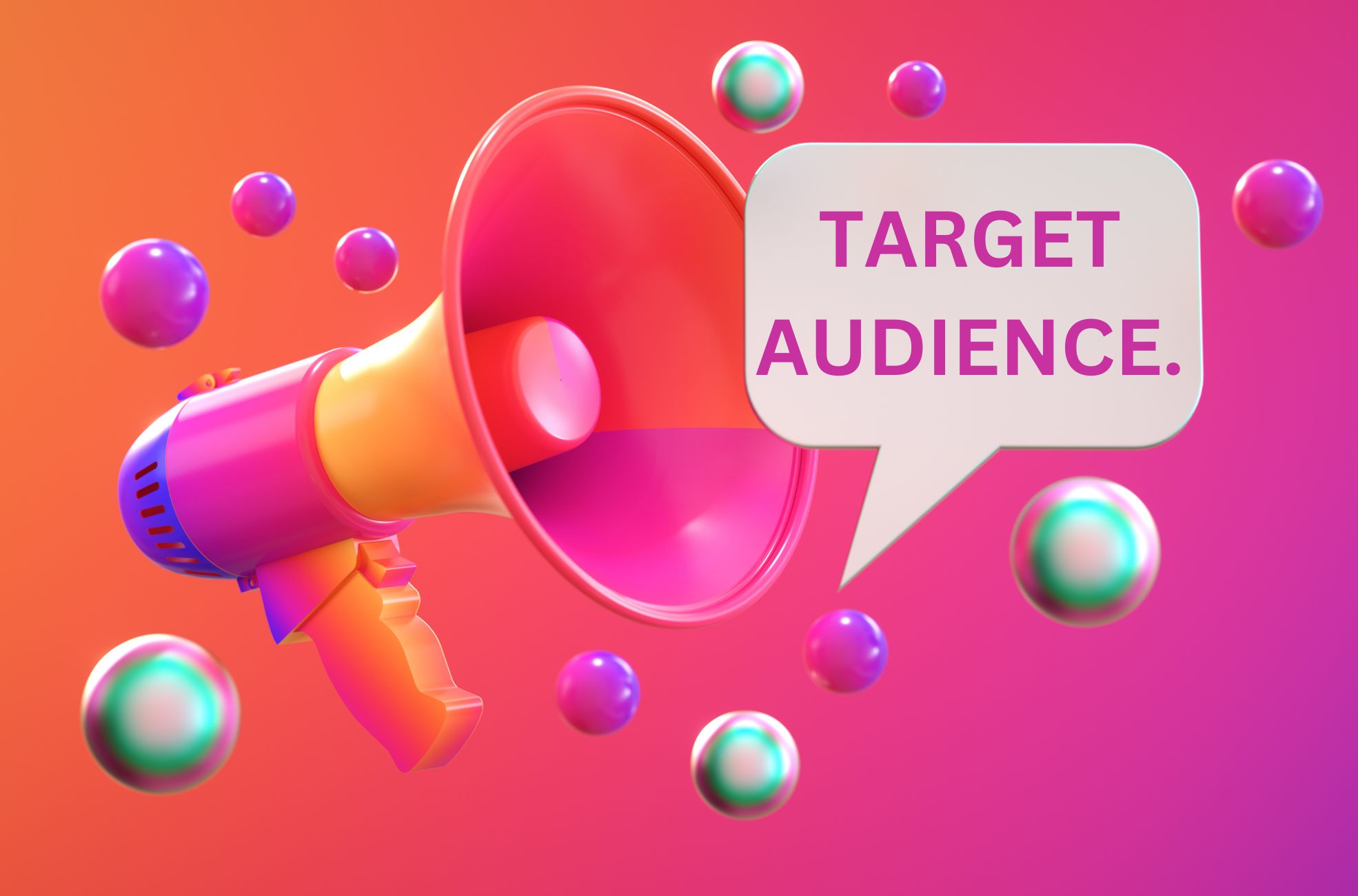Social media marketing is a transformative tool in the modern business landscape, offering unparalleled growth and customer engagement opportunities. By leveraging the power of platforms used by billions, companies can expand their reach, enhance brand recognition, and drive sales. This article provides a comprehensive guide to using social media marketing to your advantage. We cover strategies for increasing brand awareness, improving customer loyalty, and boosting revenue. Additionally, we delve into crafting a tailored social media strategy, creating compelling content, and mastering social media advertising.
With the right approach, analytics, and a finger on the pulse of current trends, your business can flourish in the digital marketing realm. Whether you’re a startup or an established enterprise, understanding and implementing these tactics can lead to sustainable growth and a robust online presence.
How Does Social Media Marketing Help a Business Grow?
Expanding Brand Awareness and Reach
In the digital age, social media has become a key platform for businesses to boost their brand presence and reach a wider audience. With over 4 billion people worldwide engaging on various social platforms, you’ve got a huge opportunity to increase brand awareness and visibility further. Social media marketing taps into this extensive user base, offering you the chance to showcase your brand to potential customers where they’re already spending a lot of their time.
The dynamic nature of social media allows for real-time interaction and the ability to engage with trends and viral content. These opportunities can significantly boost a brand’s reach. By creating engaging content and using visuals, which are known to ramp up engagement, businesses and social media marketers can encourage a culture of sharing among users.
This sharing doesn’t just reach the immediate audience but also extends to each user’s network, acting like a personal recommendation. Social media platforms offer targeted advertising options, enabling you to reach specific demographics and interests. This means your marketing efforts aren’t wasted on those who aren’t interested.
The synergy between organic and paid efforts can be potent. Organic activities inform paid strategies and vice versa, creating a unified marketing approach.
Enhancing Customer Engagement and Loyalty
The interactive nature of social media sets the stage for you to engage with your audience more personally and directly. This engagement isn’t just about promotional and content creation tools but also includes customer service. One-on-one interactions can now happen publicly, amplifying their impact.
You can build loyalty and encourage repeat business by going above and beyond customer expectations through attentive and thoughtful engagement. Social listening tools offer invaluable insights into consumer behaviour and preferences, helping you keep up with trends and conversations that matter to your audience.
This data-driven approach shapes business strategies, ensuring they fit customer needs and interests. Moreover, the immediacy of social media is crucial in crisis management. Proactive monitoring and a quick response can help mitigate potential damage to a brand’s reputation.
Personalising interactions on your social media channels, like through mentions and responses to customer reviews, creates a sense of recognition and appreciation among customers. This boosts customer loyalty and prompts them to share their positive experiences with others, naturally expanding your brand’s reach.
Driving Sales and Revenue Growth
Social media has become a significant driver of business sales and revenue. With most consumers following brands to stay updated on new products and services, social platforms have become like a digital shopping catalogue. The shift towards digital consumer-brand interactions presents a huge opportunity for you to influence purchase decisions and drive sales.
Integrating social media into various stages of the sales funnel, from awareness to consideration and purchase, means that you can engage with potential customers at multiple touchpoints. Social media retargeting, for example, allows brands to serve tailored ads to users who have previously interacted with them via social media posts, effectively re-engaging potential customers.
It’s crucial to invest in a data-driven social media marketing plan and strategy to make the most of social media’s sales-driving potential. You’ll need to continuously track engagement and conversion metrics to refine your approach. Using analytics tools can simplify this process, giving you a comprehensive view of social media performance and its contribution to your overall marketing efforts.
[virtuzone_banner id=free-consultation]
Creating a Social Media Strategy For Your Business
Defining Your Target Audience
Identifying the specific demographics that are most likely to be interested in your offerings is essential. This involves analysing characteristics such as age, location, and interests. For instance, your focus could be on millennials with a passion for sustainable living or retirees interested in luxury travel. Utilise analytics to examine patterns in how your current customers and followers interact with your content and which platforms they prefer.
Social listening tools are instrumental in understanding the topics and influencers that capture your audience’s attention. Remember, your audience may include different segments with unique needs and behaviours.
Setting Realistic Goals and Objectives
Establishing clear, attainable goals is vital for guiding your social media efforts. These should align with your company’s broader aims, whether to enhance your online presence, generate leads, or increase your subscriber count. These objectives are crucial elements of your strategy, informing your tactics.
Planning Content Types and Distribution
Align your content strategy with your marketing goals and use buyer personas to inform your content creation. Conducting a competitive analysis can provide benchmarks and spark ideas for your strategy and content. Reviewing your existing content can help identify successful elements and areas for improvement. Organise your content with a calendar and ensure you have a plan for actively distributing it to maximise exposure. Continuously evaluate the effectiveness of your content to keep your strategy adaptive and current.
Establishing a Brand Voice and Image
Develop a consistent and identifiable brand voice that mirrors your audience’s persona and your brand’s character. While the voice should be steady, the tone can adapt to different situations and platforms. Documenting your brand voice in a style guide ensures uniformity across communications. Regularly reassess and adjust your brand voice to ensure it remains in sync with your brand’s development and audience’s expectations.
Notable examples of unique brand voices include the boldness of Fenty Beauty, the wit of Oatly, and the clarity and humanity of Slack, illustrating the impact a distinctive voice can have in engaging an audience.

Content Creation for Social Media
Crafting Engaging and Valuable Content
Understanding your audience’s interests and challenges is essential for producing content that resonates. Create material that educates, entertains, or inspires by identifying the subjects that will most likely captivate your followers. This could include informative blog posts, how-to guides, or thought-provoking articles that establish your brand as a leader in your field.
Your content should make a positive impact, whether by solving a problem, offering new insights, or simply providing enjoyment.
Utilising Visuals: Images and Videos
Visuals are essential for capturing the attention of your audience. They often result in higher engagement rates and are more memorable than text-only posts. High-quality, brand-relevant images and videos should be integral to your social media marketing strategy. With platforms like Instagram and TikTok emphasising video content, incorporating this medium can offer a dynamic way to connect with followers. Keep videos concise, as social media users often prefer brevity.
Best Practices for Writing Captions and Copies
Captions and copies are critical for providing context to your visuals. A compelling opening can capture interest, while brevity can prevent users from scrolling past. Including a CTA can prompt users to engage with your post. A consistent tone that reflects your brand’s personality will contribute to a recognisable identity. Employing relevant hashtags can also enhance the discoverability of your posts.
Scheduling and Publishing Content
To keep your audience engaged, posting content on a regular basis is essential. Finding a posting frequency that suits your audience and adhering to it is more beneficial than overwhelming them with too much content. Scheduling tools can assist in organising your content calendar and ensuring posts are published when your audience is most likely to see them. Taking into account the various time zones of your audience and the peak times for each platform can help in optimising your content’s reach and engagement.
[virtuzone_banner id=setup-guide]
Social Media Advertising
Overview of Ad Formats and Platforms
A variety of ad formats allows businesses to present their brand creatively. Stories that vanish after a day and static feed posts are among the options available, each serving distinct audience needs. Video ads are particularly effective, with platforms offering view metrics to assess engagement.
Selecting an appropriate platform is essential, as each has a unique user base and atmosphere. LinkedIn’s professional setting contrasts with Instagram’s visual and informal vibe, influencing where different types of advertisements might be most effective.
Targeting Options for Maximum Reach
Utilising the sophisticated targeting features of social media platforms is crucial. These features enable businesses to direct their ads to users based on detailed criteria such as behaviour and interests, enhancing the likelihood of attracting leads and driving conversions.
Budgeting and Bidding Strategies
Determining an advertising budget involves considering content creation costs, software expenses, and ad spending. Bidding strategies influence ad frequency, with CPC and CPM as primary options to align with campaign goals.
Measuring Ad Performance and ROI
Tracking ad performance is key to evaluating their effectiveness and ROI. Engagement rate and CTR are among the metrics that shed light on audience interaction and interest.
To calculate ROI, subtract the investment from the return, divide by the investment, and multiply by 100. A positive ROI signifies that the campaigns are profitable. Optimising ROI requires a deep understanding of your audience, crafting impactful content, and ongoing strategy refinement.
Additional metrics like amplification rate and virality rate provide further insight into content reach. CSAT, NPS, and social sentiment analysis can reveal customer loyalty and brand perception.

Analytics and Improvement
Tools for Tracking Social Media Performance
Monitoring the success of your social media strategies is essential. A variety of social media analytics tools are available to compile comprehensive reports that can inform your team and stakeholders about the effectiveness of your campaigns. These tools provide real-time and historical data, which is crucial for thoroughly evaluating your strategies.
For example, you might be interested in assessing the performance of a particular platform, identifying your most successful posts, or determining which social network has had the greatest impact during a marketing campaign. Tools like Hootsuite Analytics aggregate data from multiple social networks, allowing for a holistic view and comparison of results. They also offer competitive analysis and insights into the most effective content formats.
Google Analytics provides insights into traffic sources, audience demographics, and the ROI of social campaigns. Other tools, such as RivalIQ, Brandwatch, and Talkwalker, expand their capabilities to include real-time data, alerts, and monitoring of social conversations beyond your channels. They are useful for gauging brand sentiment and the influence of key opinion leaders.
Tools like the Channelview Insights App for YouTube or Panoramiq Insights for Instagram, which includes analytics for Stories, can be particularly valuable for platform-specific insights. Mentionlytics offers social media monitoring capabilities for businesses operating in multiple languages. Collectively, these tools guide your social media management strategy to ensure alignment with your objectives.
Interpreting Data to Make Decisions
Analysing performance data is crucial to determine the effectiveness of your social media strategy. This information guides where to focus your efforts and budget. Interpreting this data enables informed decisions about content, engagement, and overall marketing strategy.
Metrics such as engagement rates, reach, impressions, video views, audience growth rates, click-through rates, and conversion rates are vital for a comprehensive performance overview. Cost metrics are also important, as are response times and NPS for gauging customer service and loyalty.
Social share of voice and sentiment analysis provide insights into your brand’s presence and perception relative to competitors. Monitoring these metrics allows for the refinement of strategies and campaigns to enhance engagement and impact your bottom line.
A/B Testing for Optimisation
A/B testing is a systematic approach to determining which types of social media posts and content resonate with your audience. It involves comparing different content variations to discover the most effective approach.
Social media platforms facilitate real-time A/B testing, enabling rapid content marketing and advertising strategy adjustments. This immediate feedback allows for swift optimisation of your efforts.
All aspects of your social media content, from imagery to calls-to-action, can undergo A/B testing to maximise effectiveness.
Staying Updated with Social Media Trends
For marketers, staying abreast of social media trends that can emerge rapidly, influenced by various global factors, is critical. Being attuned to these trends can enhance traffic and engagement.
Engaging with social platforms daily, utilising trend-tracking tools, and observing industry influencers can provide insights into current trends. Setting up Google Alerts for relevant terms, participating in LinkedIn Groups, and monitoring competitors can also yield valuable information.
By keeping informed, you ensure that your social media strategies remain relevant and impactful.

Elevate Your Business with Social Media Savvy
Leveraging social media marketing is more than just staying on top of trends; it’s about creating a vibrant, interactive space where your brand’s voice amplifies and customer loyalty blossoms. With the right mix of strategic planning, creative content, and keen analytics, your business’s social strategy can forge deeper connections, drive meaningful engagement, and convert followers into ambassadors.
Remember, social media is a dynamic landscape that demands agility. Keep your content fresh, your analytics deep, and your interactions genuine. As you align your effective social media marketing strategies with your core business goals, watch your brand thrive in a marketplace that’s constantly evolving. Ready to take the next step? Embrace social media marketing, and let it be the catalyst for your business’s growth.
FAQ’s
How Can a Company Be Successful in Social Media Marketing?
Success in social media marketing hinges on creating engaging, relevant content tailored to your audience, consistent interaction, and leveraging analytics to refine strategies. Understanding your target demographic, establishing a brand voice, and using each social media platform’s unique features is vital. Regularly monitoring and responding to feedback helps build community and customer loyalty.
What is an Example of Social Media Marketing?
An example is a brand running a campaign on Instagram featuring eye-catching images of its products, user-generated content, and hashtags to increase visibility. They also collaborate with influencers to reach a broader audience and host giveaways to engage followers.
What is a Social Media Strategy?
A social media strategy is a comprehensive plan outlining goals, target audience, content themes, and posting schedules across social media marketing campaigns on various platforms. It includes tactics for engaging with the audience, measuring performance, and adapting the approach based on analytics and feedback. This strategy aims to enhance brand presence, drive traffic, and increase conversions through social media.
How Do Beginners Use Social Media Marketing?
Beginners should start by selecting suitable social media marketing platforms for their audience, creating quality content aligned with their brand, and engaging regularly with their audience. It’s essential to establish clear objectives, learn the basics of each platform, and use analytics to track progress. It is advisable to start small and gradually expand efforts as they gain confidence and understand social media marketing.









